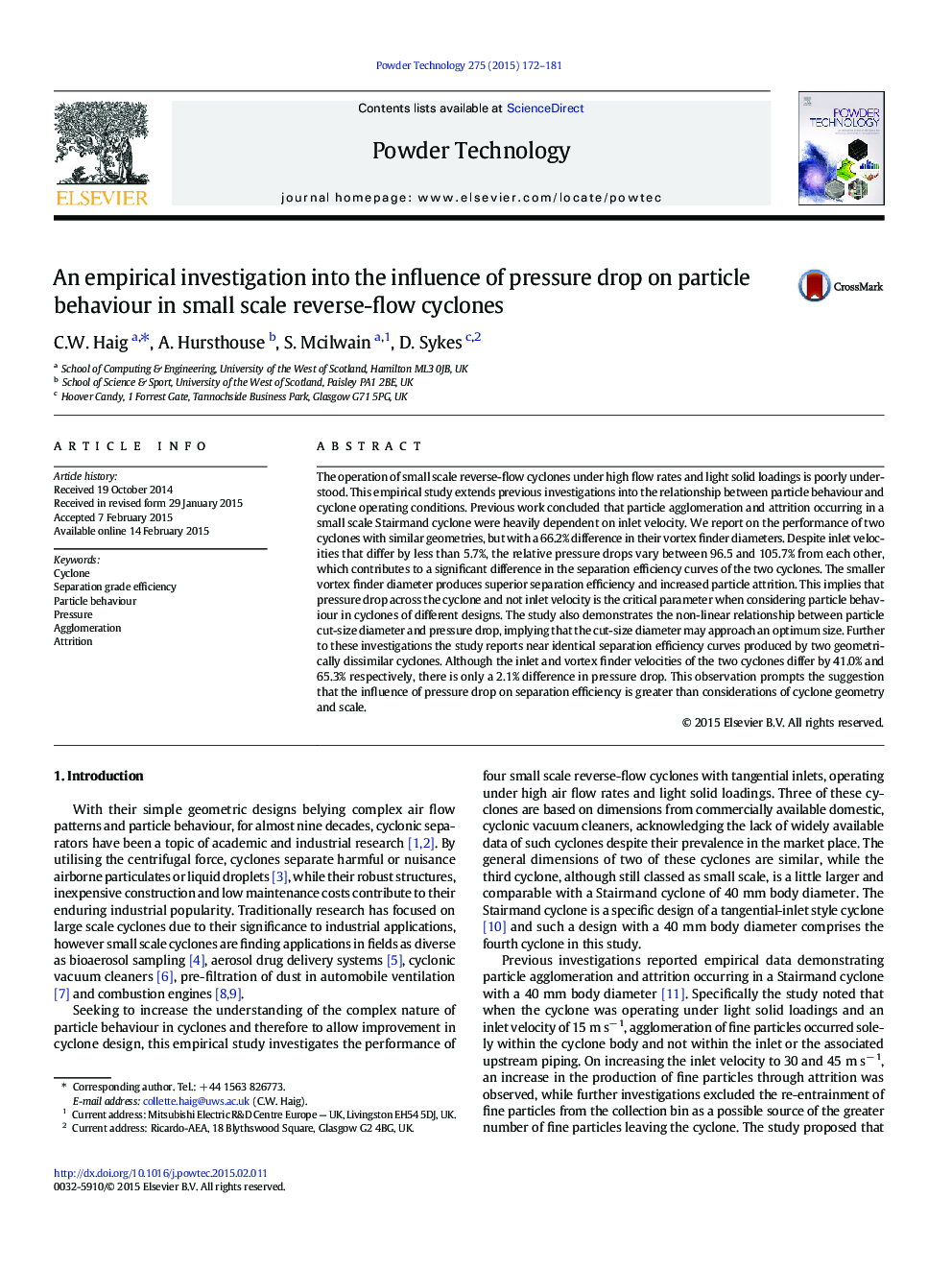| کد مقاله | کد نشریه | سال انتشار | مقاله انگلیسی | نسخه تمام متن |
|---|---|---|---|---|
| 235671 | 465644 | 2015 | 10 صفحه PDF | دانلود رایگان |
• Study of pressure and particle behaviour in four small scale reverse-flow cyclones
• Pressure drop and not inlet velocity is the critical influence on particle behaviour.
• Influence of pressure on separation is greater than cyclone geometry and scale.
• Non-linear relationship between particle cut-size diameter and pressure drop is shown.
The operation of small scale reverse-flow cyclones under high flow rates and light solid loadings is poorly understood. This empirical study extends previous investigations into the relationship between particle behaviour and cyclone operating conditions. Previous work concluded that particle agglomeration and attrition occurring in a small scale Stairmand cyclone were heavily dependent on inlet velocity. We report on the performance of two cyclones with similar geometries, but with a 66.2% difference in their vortex finder diameters. Despite inlet velocities that differ by less than 5.7%, the relative pressure drops vary between 96.5 and 105.7% from each other, which contributes to a significant difference in the separation efficiency curves of the two cyclones. The smaller vortex finder diameter produces superior separation efficiency and increased particle attrition. This implies that pressure drop across the cyclone and not inlet velocity is the critical parameter when considering particle behaviour in cyclones of different designs. The study also demonstrates the non-linear relationship between particle cut-size diameter and pressure drop, implying that the cut-size diameter may approach an optimum size. Further to these investigations the study reports near identical separation efficiency curves produced by two geometrically dissimilar cyclones. Although the inlet and vortex finder velocities of the two cyclones differ by 41.0% and 65.3% respectively, there is only a 2.1% difference in pressure drop. This observation prompts the suggestion that the influence of pressure drop on separation efficiency is greater than considerations of cyclone geometry and scale.
Separation grade efficiencies of two geometrically dissimilar cyclones with near identical pressure drops.Figure optionsDownload as PowerPoint slide
Journal: Powder Technology - Volume 275, May 2015, Pages 172–181
